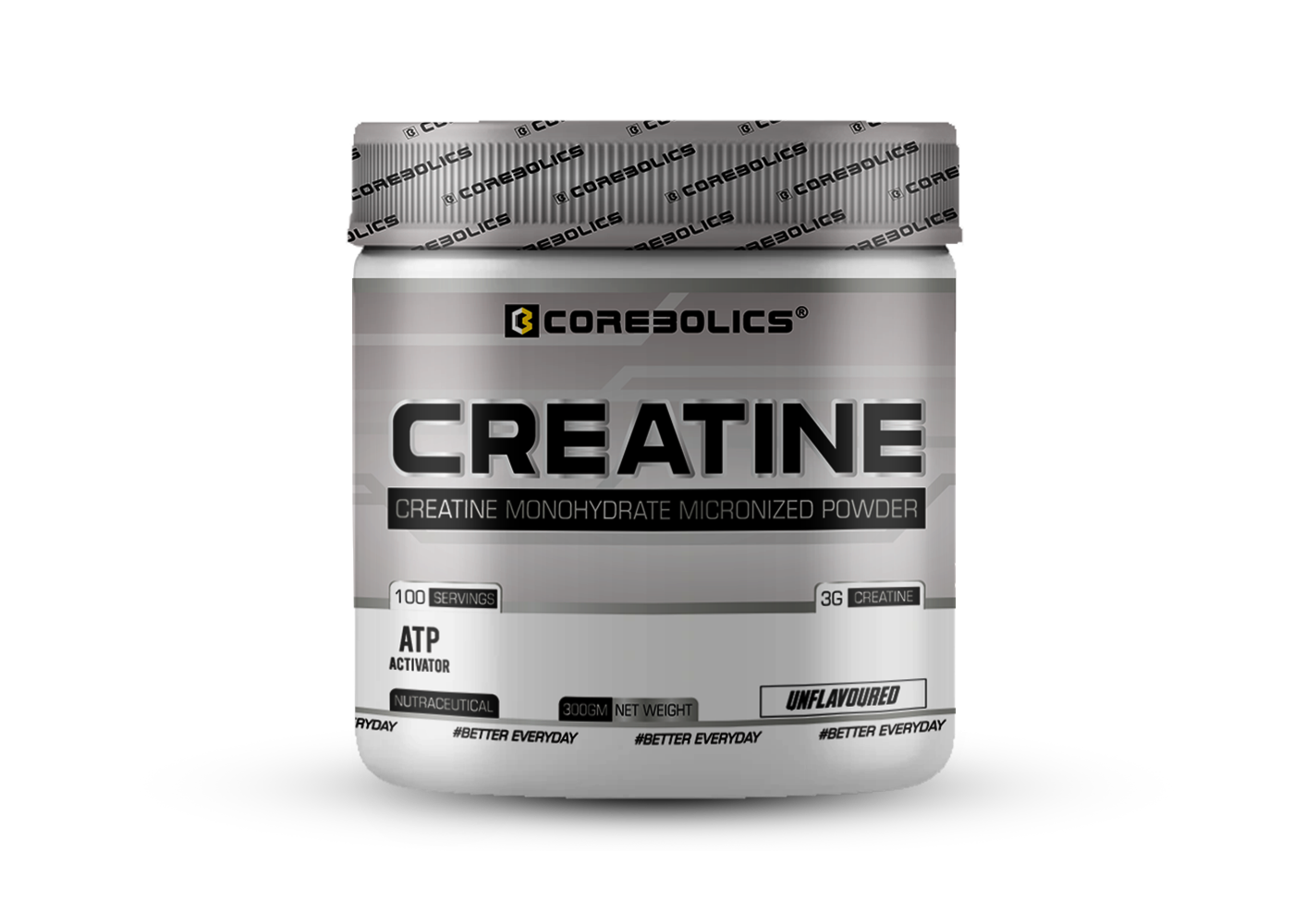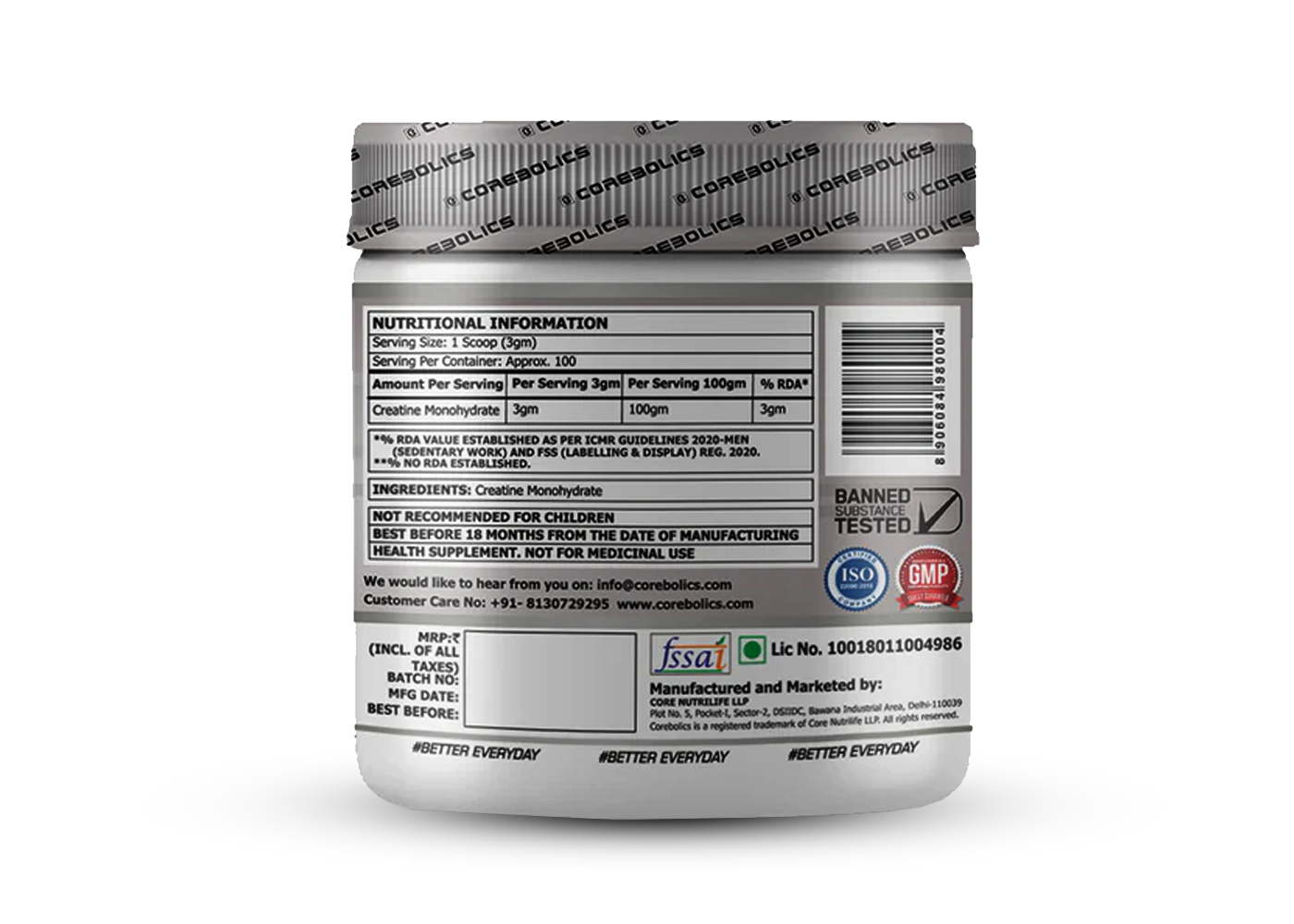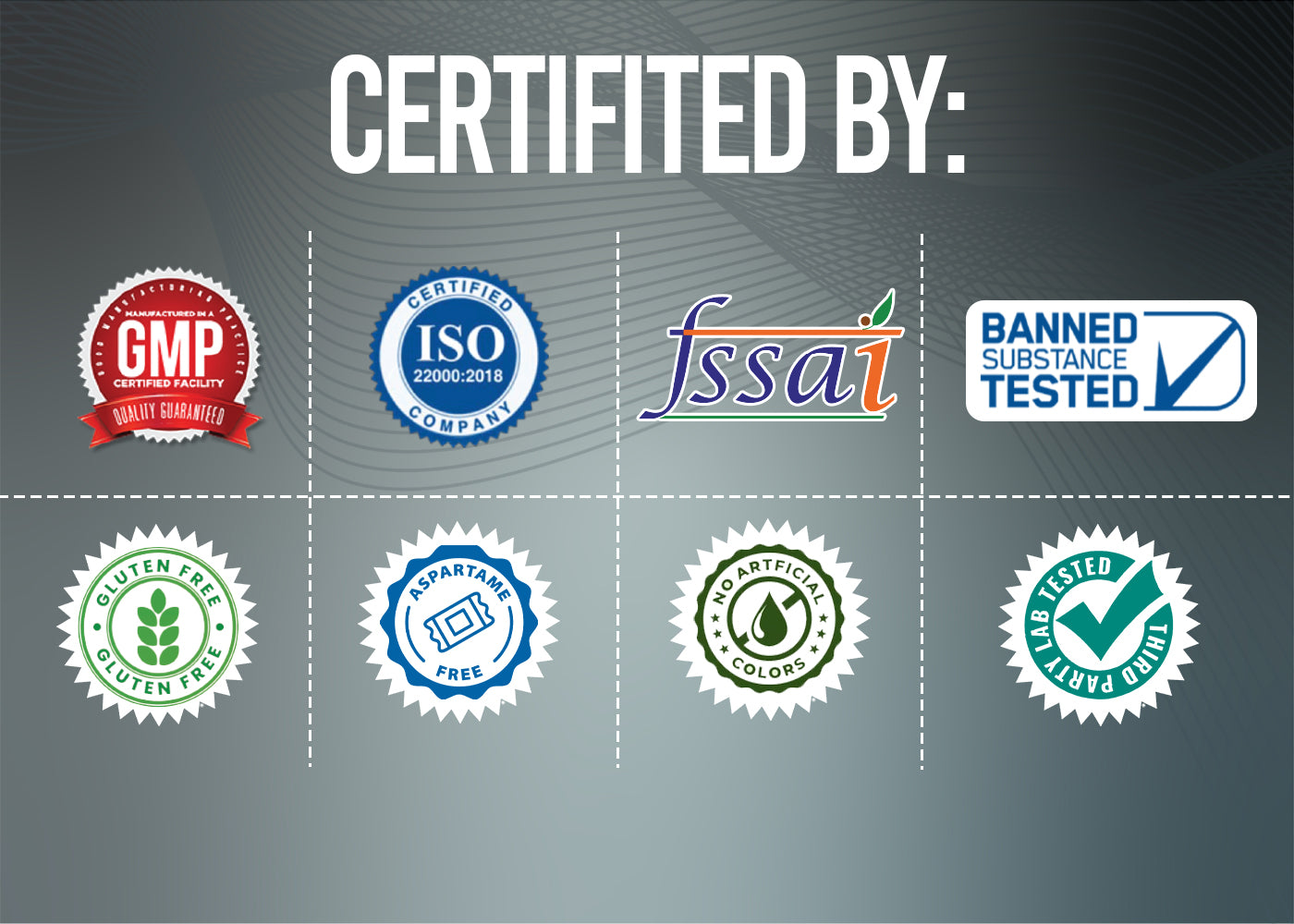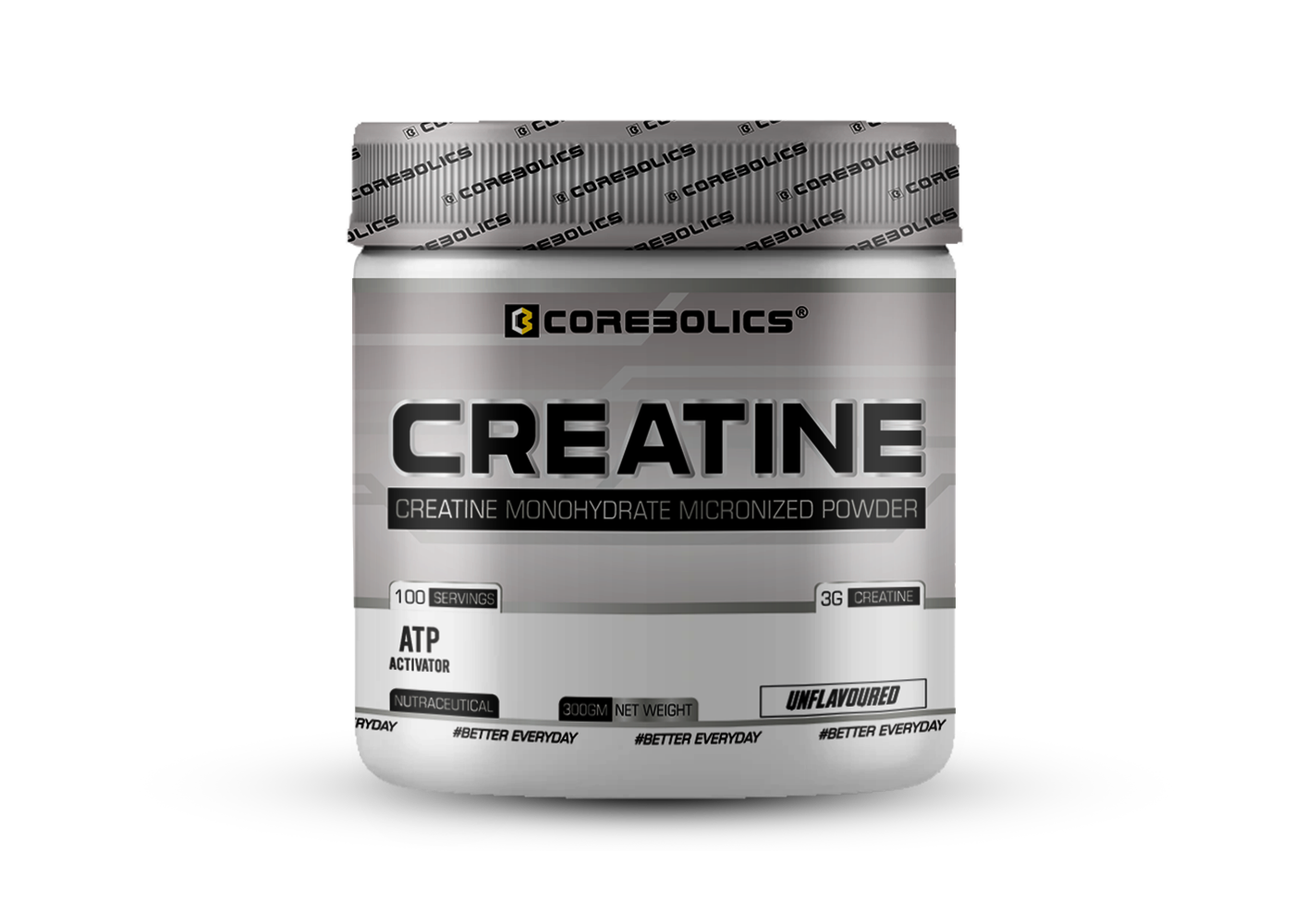







Creatine functions to increase the availability of cellular ATP, adenosine triphosphate. Muscular contractions take place in the presence of ATP. An increase in creatine levels is thought to increase the force of muscle contractions. Creatine works by acting on mechanisms of ATP by donating a phosphate ion to increase the availability of ATP, which increases muscle energy and delays muscle fatigue.
Supplementing with creatine can boost muscle size, strength and endurance, improve athletic performance and speed muscle recovery.
DIRECTIONS: Take 1 Scoop (3gms) per day preferably post training.
It is recommended that athletes take creatine with a high carbohydrate drink (eg. juice or a concentrated carbohydrate solution) or with a carbohydrate protein supplement, in order to increase insulin and promote creatine uptake. Use this product as a part of a proper diet and exercise program.
STEROID & DOPE-FREE: This product only contains ingredients as listed on the label and is free from dope and substances as listed in the 2017 prohibited list of substances of World-Anti-Doping Agency.









